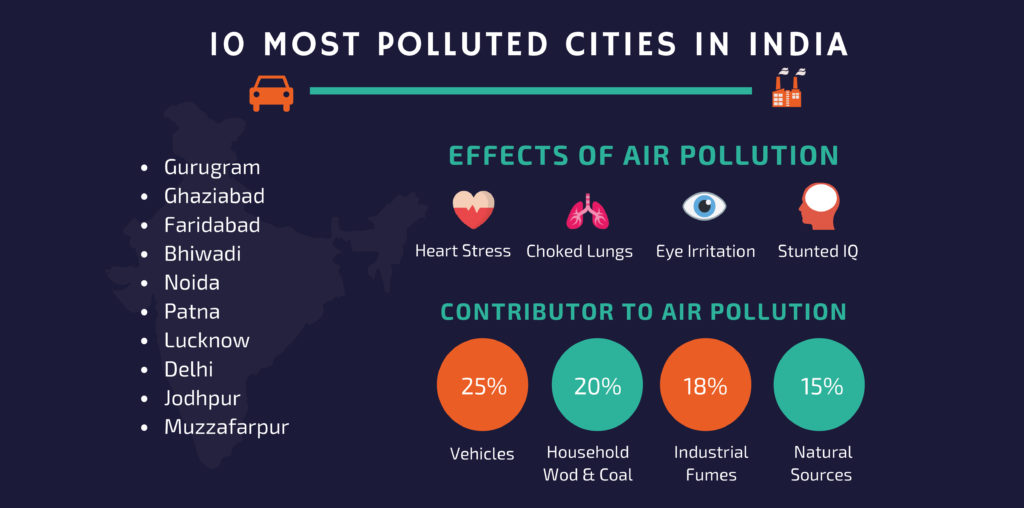Do we even know that 9 out of 10 people are breathing dirty, polluted air, each second? Air pollution is a global problem that’s affecting each one of us, irrespective of gender, age, race or location. It an alarming thought 10 of the world’s most polluted cities are in India.

a sustainable alternative to modern-day transportation problems
Winters everywhere are marked by overcast weather that traps particulate pollutants beneath the cloud. Pollutants from vehicles, industries, and homes circulate closer to land surfaces and affect the air we inhale. This season is particularly marked by smog, low visibility and increased respiratory troubles in most Asian cities. In the Delhi-NCR area and the rest of India, this is largely due to vehicular pollution.
Reducing tailpipe emissions is one of the many solutions for addressing pollution and consequent climate change. With population increase, the number of on-road vehicles will double every 8-10 years, leading to massive Co2 emissions, if not controlled. Hence a suitable way forward is switching to clean energy vehicles.
Electric vehicles are our future to clean-energy transport. The ‘Faster Adoption & Manufacturing of Electric Vehicles’ (FAME) scheme has been launched effectively from April 1st, 2019. This has been done to bring 30% increased electric vehicle usage by 2030. If this targeted goal is reached by 2030, then it would save an estimated amount of 846 million tonnes CO2 and 474 million tonnes of oil.
Electric Tuk-Tuks in South Asia have spread widely across India by the name of e-rickshaws or totos. The electric motors used for running e-rickshaws have a power range anywhere between 650 to 1400 watts. Their rechargeable batteries are lead-acid ones and they come with accelerators, headlights/ taillights, windshields and even wipers like diesel cars.
For the rickshaw owners, it’s a happy prospect now since there is no continuous pedaling required and ensures more trips in a given time. Charging batteries is not expensive since the cost can be easily recovered from the trips they make.
For passengers, they get to move away from bump-free, uncomfortable rides from pedal rickshaws or diesel autos that belched smoke. One passenger from Kolkata has been quoted saying to the newspaper, The Hindu that even though they have to pre-book totos, it’s much more comfortable and comes cheaper on a per-person basis.
Automobile brands in India are coming forward to enter this segment, Indo Wagen being a premier one among them. A brand owned by Zeniak Innovation Limited, Indo Wagen has been a premier name in the segment of manufacture and supply of e-rickshaws. The brand, since inception, has been a green crusader, through their range of battery-run vehicles.
Switching to electric, battery-run vehicles from the diesel-run fleet is a tough ask. However, the change is beginning to show results. With more mass awareness, strong central and state policy and public-private collaboration, we will be able to secure a cleaner future for the next generation.
Let’s end on a positive note by the statement of Nobel Prize committee while handing awards to scientists John Goodenough, Stanley Whittingham, and Akira Yoshino in 2019, for chemistry. “Lithium-ion batteries have revolutionized our lives since they first entered the market in 1991. They have laid the foundation of a wireless, fossil-fuel-free society, and are of the greatest benefit to humankind.”




